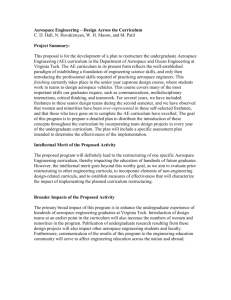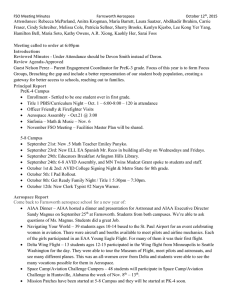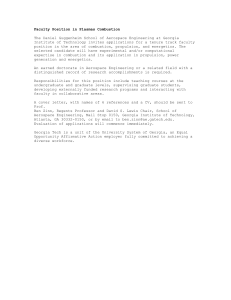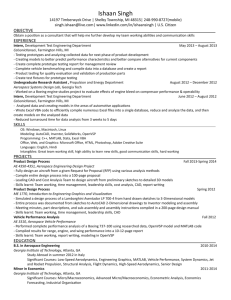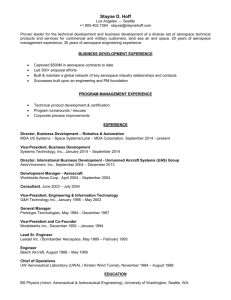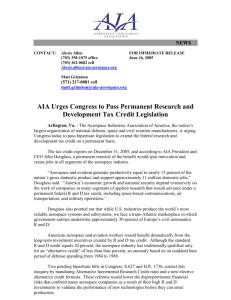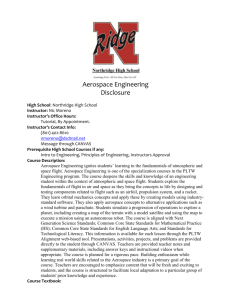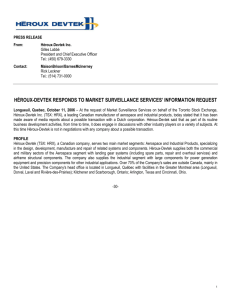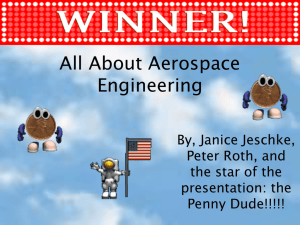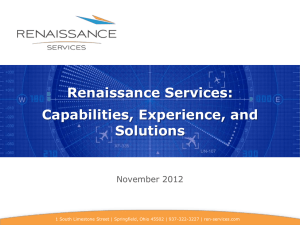Ch E/ME 463 Composite Materials
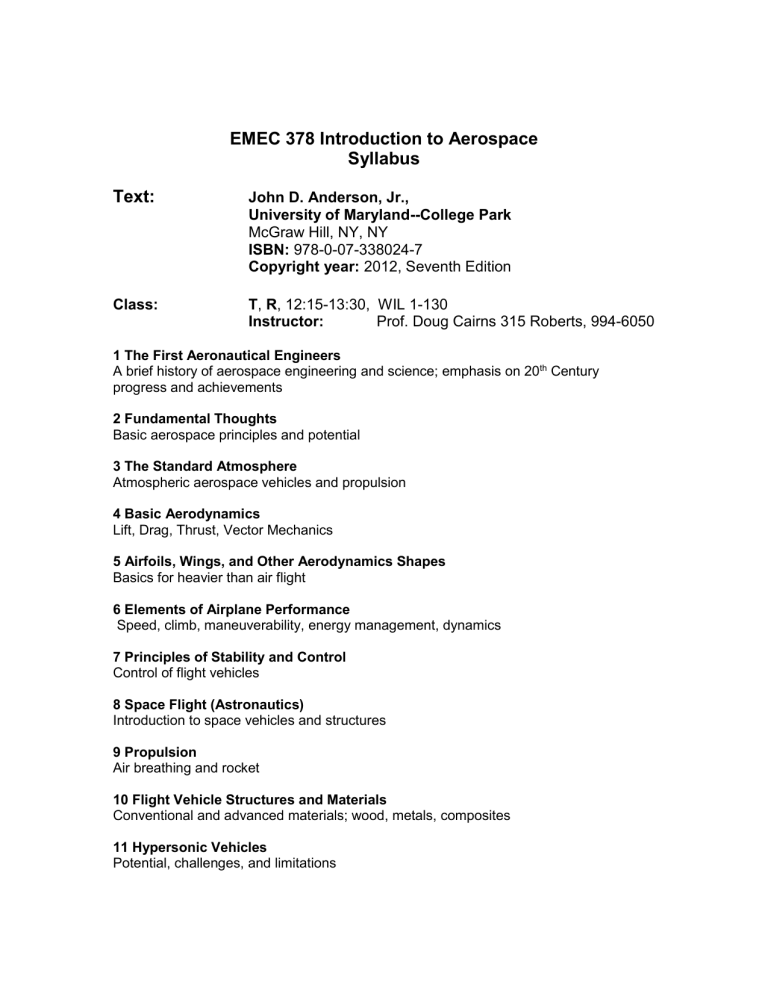
EMEC 378 Introduction to Aerospace
Syllabus
Text:
John D. Anderson, Jr.,
University of Maryland--College Park
McGraw Hill, NY, NY
ISBN:
978-0-07-338024-7
Copyright year:
2012, Seventh Edition
Class: T
,
R
, 12:15-13:30, WIL 1-130
Instructor:
Prof. Doug Cairns 315 Roberts, 994-6050
1 The First Aeronautical Engineers
A brief history of aerospace engineering and science; emphasis on 20 th Century progress and achievements
2 Fundamental Thoughts
Basic aerospace principles and potential
3 The Standard Atmosphere
Atmospheric aerospace vehicles and propulsion
4 Basic Aerodynamics
Lift, Drag, Thrust, Vector Mechanics
5 Airfoils, Wings, and Other Aerodynamics Shapes
Basics for heavier than air flight
6 Elements of Airplane Performance
Speed, climb, maneuverability, energy management, dynamics
7 Principles of Stability and Control
Control of flight vehicles
8 Space Flight (Astronautics)
Introduction to space vehicles and structures
9 Propulsion
Air breathing and rocket
10 Flight Vehicle Structures and Materials
Conventional and advanced materials; wood, metals, composites
11 Hypersonic Vehicles
Potential, challenges, and limitations
12 Design Project
Design concepts; small group design problem using aerospace principles presented in class. Introduction and updates will be presented periodically throughout the semester.
Course Outcomes
Upon Completion of this course, students will have demonstrated the ability to:
calculate the performance of aerospace structures o lift o drag o propulsion o dynamics
to apply fundamental engineering mechanics and principles for the design and analysis of aerospace systems
combine the above principles for a design and analysis project
to recognize the applications of other engineering and science courses to aerospace systems
Grading (Assessment and Evaluation)
Midterm, Final, and Quizzes (50%), Project (25%), Homework and class participation (25%). Homework will include applications of aerospace engineering and science.
ME students who are exempt from the Board of Regents C- policy must understand that a D- grade is not considered passing by the M&IE Department. A grade of D- in any required course must be repeated, with a D or higher grade earned, for it to apply to degree requirements.
Computer and Laboratory Usage
Students will use a computer programs for solving aerospace problems. Students will engage in a design project to utilize the concepts.
Special Needs
Students with special needs or requiring special accommodations should contact the instructor or the campus Disabled Student Services Office at the earliest opportunity.
Smart Phone and Laptop Wireless Use in Class
Smart phones and laptops are important technologies for current learning and information access. We will have specific exercises in class which will utilize these resources and students will be expected to bring and/or share them. However, outside of the specified exercises, these can be disruptive and as a courtesy to others are
to be turned off in class, just like during a professional engineering meeting.


